Enter a search term above to search our website
Pages
News
Star Objects
My name is Erin Foster, and I am a masters student at Cardiff University in objects conservation. I have been volunteering at Perth Museum and Art Gallery in September in the conservation department as part of my summer placement.
I was fortunate enough to assist artefact conservator Will Murray in the conservation of a pair of cast-iron cannons. Both cannons are thought to have been made before 1815 for the Kinnoull Rock Artillery, Perth, also known as the “Bellwood Battery”, An artillery company formed during the Hundred Days War, the period between Napoleon’s return from exile and the restoration of Louis XVIII (actually 110 days), also known as the War of the Seventh Coalition, which included the Battle of Waterloo. The artillery company was co-led by Captain Young and comprised 80 men and 4 artillery pieces. Only 2 of the cannon survive, those in the Museum collection today. The cannons were stationed on Kinnoull Hill and the artillery troop undertook drills on the North and South Inches. During peacetime, the cannons were known to have been fired on three occasions; at the entry of Queen Victoria into the city in 1842, at the opening of Dundee-Perth Railway, and during the funeral procession of Thomas Graham of Balgowan in 1843.
Both were cleaned twice with warm water and soap and then immediately dried to prevent corrosion/rust. Significant amounts of dirt were removed, and the white material was reduced but still clung to the recesses.

Cannons prior to treatment. Note the white material covering both cannons.
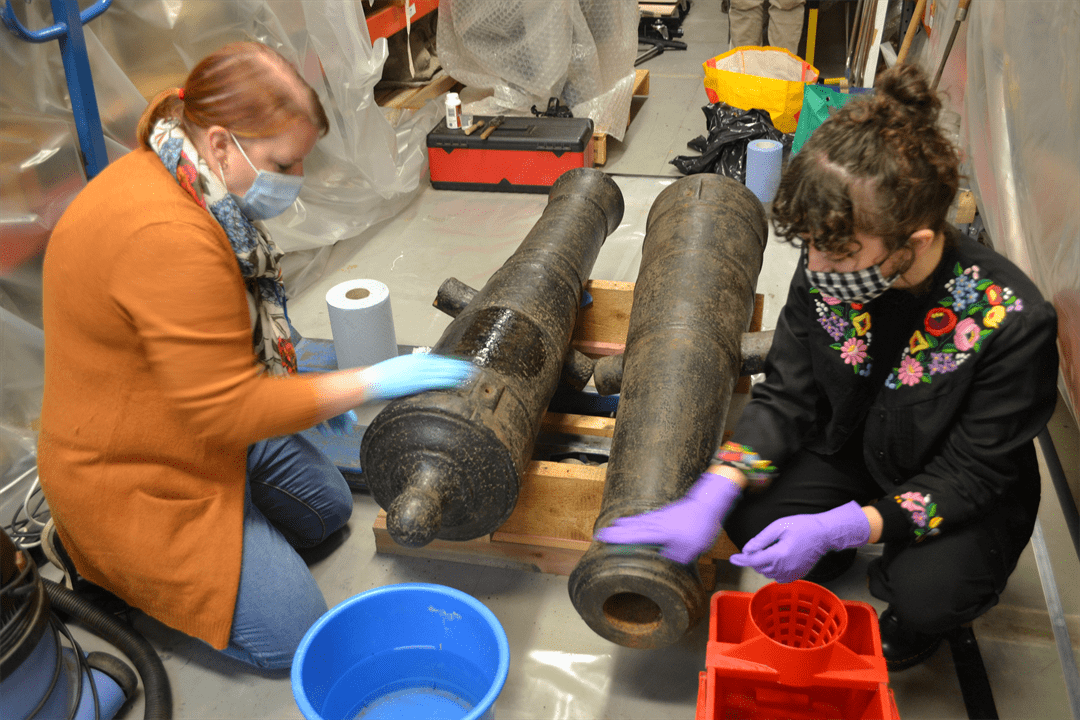
Cannons being cleaned with water by myself and fellow conservation intern, Erinn Dunlea
Next, soft steel bristle brushes were used to remove more dirt from the cannon surface. It is best practice for the brushing to be accompanied by a vacuum to make sure the excess dirt and dust do not get into the air. The stiff bristles helped to get further into the recesses and remove more of the white material and helped to burnish the iron and paint giving it a more natural, glossy appearance
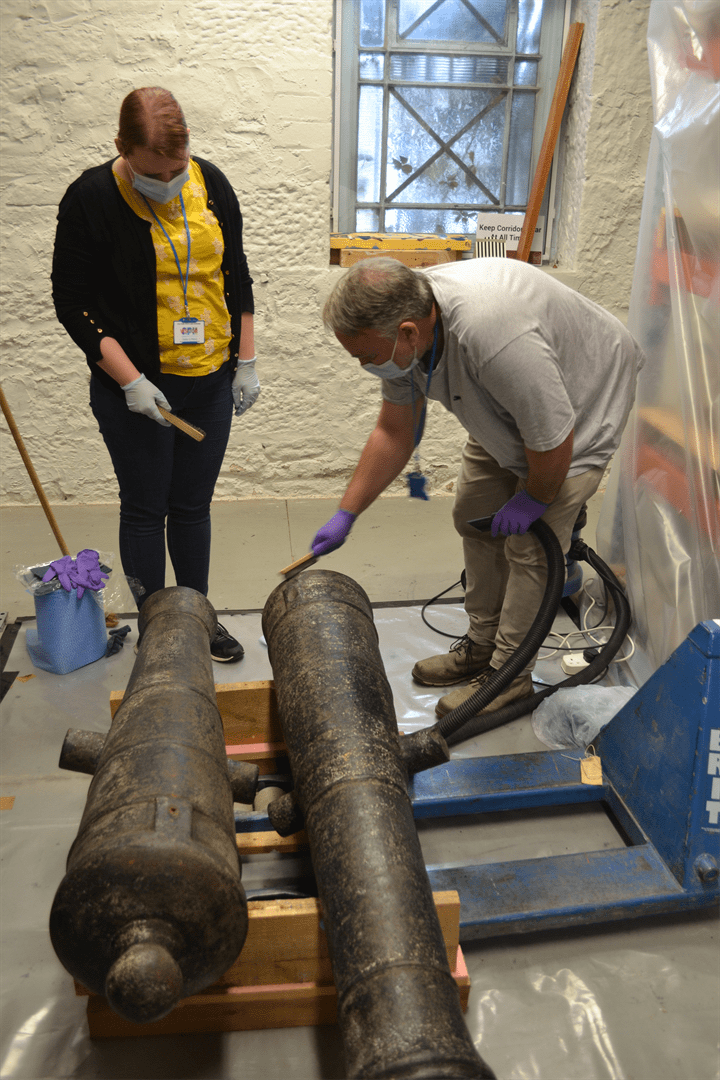
A team effort between myself and the conservator, Will, was needed to clean the cannons with the steel bristle brush as it was very tiring work!
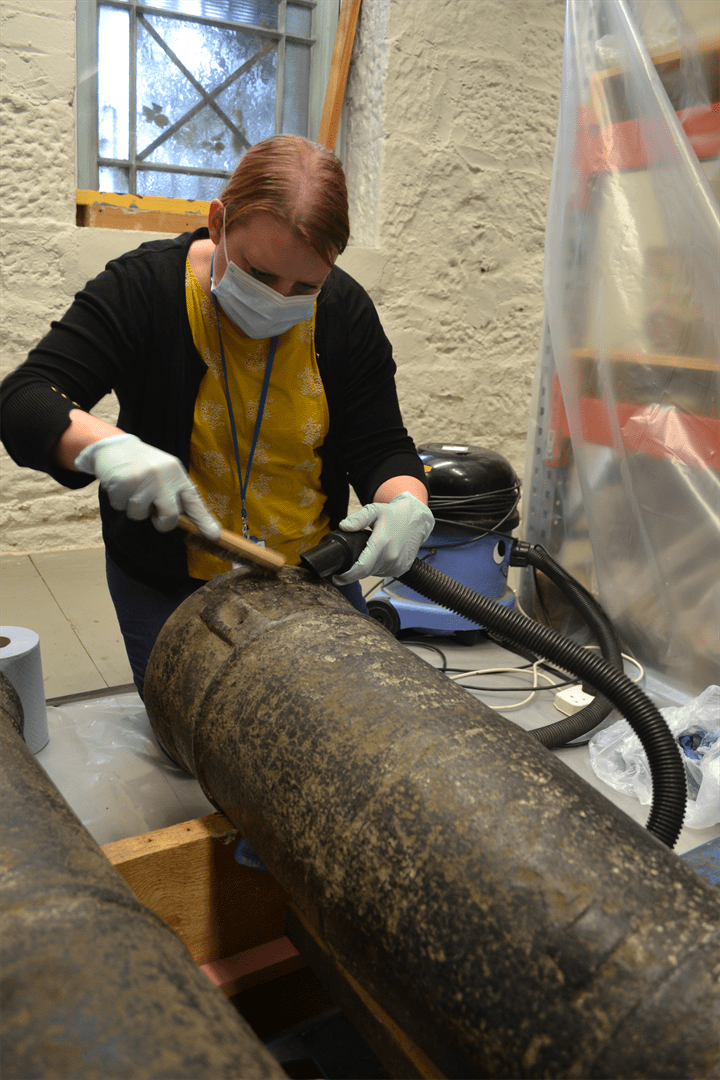
This was followed by cleaning with slightly damp cotton buds to get deeper into the recesses and remove more of the white material. The interiors of the cannon barrels were also cleaned out and we discovered rocks, gravel and even glass bottles inside. As a last step, the cannons were cleaned once more with water.
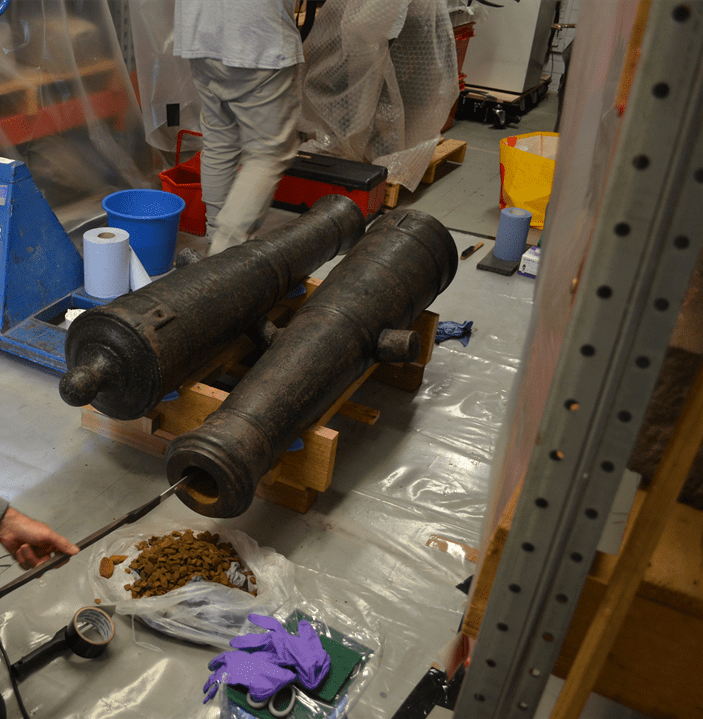
Debris, including gravel and glass, being removed from the barrel of the cannon
There were several options on what the next step of the treatment could be. The first option was to do nothing further beyond the cleaning that was done. The second option was to apply a light coating of Kurust to give the cannons a more uniform colour throughout and make the areas of paint loss blend in further. The third option considered was to completely repaint the cannon with black paint. It was determined painting would not be appropriate as the cannon will be displayed indoors in a climate-controlled environment and this amount of treatment was unnecessary. The appearance of the cannons following cleaning alone was deemed to be the desired look. The cannons are in a stable condition, without rust, and their appearance helps to convey their history. In conservation, we prefer to use the minimal amount of intervention necessary to ensure the object can be enjoyed for years to come.
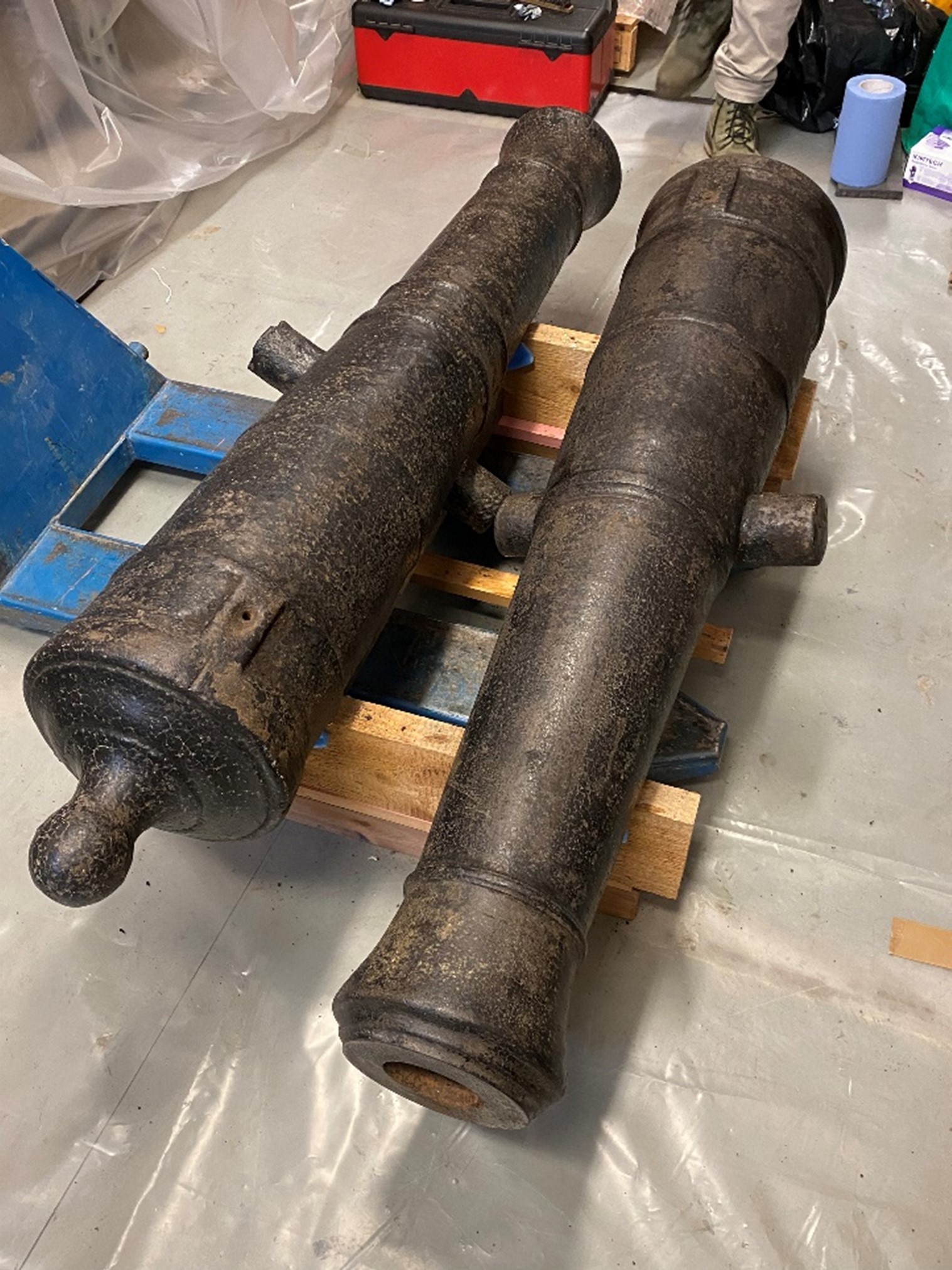
Both cannons following conservation treatment and you can see much of the white material has been removed!
While the cannons were being cleaned, the letter K and a possible crown insignia were discovered stamped on the top of one cannon. Further research will need to be completed to see if this can confirm the current information we have regarding the manufacturer.
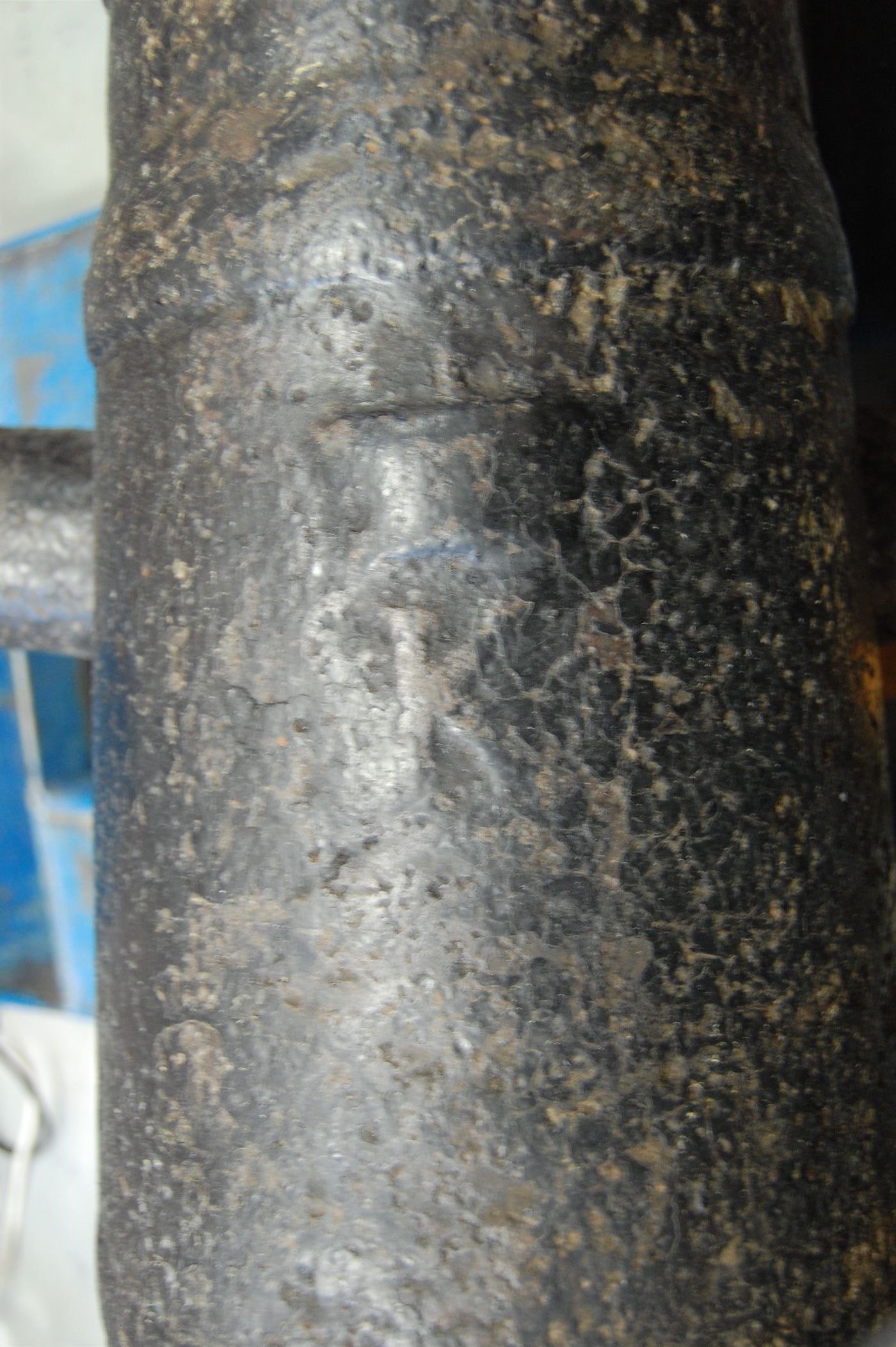
Letter ‘K’ and possible crown insignia on cannon
Thank you for reading and I hope you enjoyed learning more about these cannons as much as I did working on them!